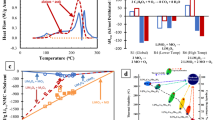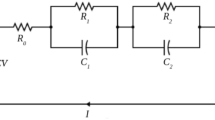Abstract
During a failure event, electrochemical cells can exhibit such characteristics as extreme high temperatures, deflagration, fire, venting of electrolyte and rapid uncontrolled disassembly. The cell’s characteristics prior to, during, and after a destructive event are important in developing preventive and mitigating hazard steps. A novel measuring system based on isothermal calorimetry has been developed and utilized to further understand the worst-case event produced by large format electrochemical cells. This system allows for the containment of the reaction and its products while measuring the pressure and release rate of the gaseous product, as well as a complete thermal profile of the reaction. This paper provides a description of the calorimeter, calibration test results on its performance, test results, and empirical model from a selection of cells tested. The cells utilized in this developmental testing were Lithium Iron Phosphate and Lithium Cobalt Oxide cells ranging from 6 to 38 Ampere hour capacities and approximately 40 mm diameter, 170 mm height, and 0.35 kg each. This analytical system allows for a wide range of cells, chemistries, failure mechanisms and testing environments for lithium-ion cells, static or under load. Empirical models developed from this flexible and adaptive system will enable researchers to compare larger samples across material property boundaries to better predict the outcome of destructive chemical reactions.
















Similar content being viewed by others
Abbreviations
- LiFePO4 :
-
Lithium iron phosphate
- LiCoO2 :
-
Lithium cobalt oxide
- SOC:
-
State of charge
- Watt’s Law:
-
Power (W) = Voltage * Current (A)
- Ohm’s Law:
-
Voltage = Current * Resistance
- DOD:
-
Department of defense
- Ahr:
-
Ampere hour
- V:
-
Voltage
- NSWC:
-
Naval surface warfare center
- CID:
-
Current interrupt device
- ISO:
-
International organization for standardization
- NIST:
-
National institute of standards and technology
- SEI:
-
Solid electrolyte interphase
- LIB:
-
Lithium-ion battery
- NEW:
-
Net explosive mass
References
S9310-AQ-SAF-010 Technical manual for navy lithium battery safety program responsibilities and procedures
Chin A, Ellison D. Microcalorimetric method to determine the corrosion rate of liquid propellant and metal container. In: Second international heat flow calorimetry symposium on energetic materials. Leeds, U.K. 1999
Ellison D., Ubelhor R. United States patent 8,147,133. In:Top loaded twin cell calorimeter system with removable reference. 2009.
Chin A., Ellison D., et al. Thermal hazard evaluation of full scale 5”/54 propelling charge. In: Fifth international HFC conference. Indianapolis, IN 2005
Ellison D, Ubelhor R. Use configuration approach to kinetics using heat flow calorimetry. Netherlands: Seventh International Heat Flow Calorimetry Symposium on Energetic Materials. Rijswijk; 2010.
Ubelhor R, Ellison D, Pierce C. Enhanced thermal property measurement of a silver zinc battery cell using isothermal calorimetry. Thermochim Acta. 2015;606:77–83.
Ubelhor R., Ellison D. Heat flow calorimetry of batteries and full decomposition of propellants, explosives, and pyrotechnics in heat flow calorimeters. In: Technical presentations at 9th international heat flow calorimetry symposium on energetic materials. Tampere, Finland. 2015.
Ubelhor R, Ellison D. Calorimetric comparisons of energetic systems. In: 10th international heat flow calorimetry symposium on energetic materials. Crane, IN, 2017.
Ubelhor R. Heat flow calorimetry: innovations for test and evaluation of high energy systems. Washington DC: Naval Future S&T Expo; 2017.
Ubelhor, R; Ellison, D. United States Patent 10,288,497 and 10,288,572. Adaptive heat flow calorimeter. 2017, 2018.
Ubelhor, R; Ellison, D. United States Patent 9,739,670 and 10,001,417 B2 Apparatus for destructive event testing of chemical energy systems using heat flow testing systems and related materials. 2019.
Weng J, Ouyang D, Liu Y, Chen M, Li Y, Xinyan H, Wang J. Alleviation on battery thermal runaway propagation: effects of oxygen level and dilution gas. J Power Sour. 2021;509:230340.
Weng J, Xiao C, Ouyang D, Yang X, Chen M, Zhang G, Yuen RKK, Wang J. Mitigation effects on thermal runaway propagation of structure enhanced phase change material modules with flame retardant additives. Energy. 2022;239:122087.
Weng J, He Y, Ouyang D, Yang X, Chen M, Cui S, Zhang G, Yuen RKK, Wang J. Honeycomb inspired design of a thermal management module and its mitigation effect on thermal runaway propagation. Appl Therm Eng. 2021;195:117–47.
Wang Q, Zhong G, Mao B, Wang C, Jiang L, Xu K, Sun J. Thermal runaway and fire behavior investigation of lithium ion batteries using modified cone calorimeter. J Therm Anal Calorim. 2019;135:2879–89.
Wang J, Ouyang D, He Y, Chen M, Liu J. Experimental study on the thermal behaviors of lithium-ion batteries under discharge and overcharge conditions. J Therm Anal Calorim. 2018;132:65–75.
Wen J, Chen W, Jiang J. Thermal runaway induced by dynamic overcharge of lithium-ion batteries under different environmental conditions. J Therm Anal Calorim. 2021;146:855–63.
Fuentevilla D. Lithium battery hazards detection, mitigation, and safety. In: 8th triennial international fire & cabin safety research conference. 2016.
Dow J, Batchelor C. U.S. Navy lithium battery safety. In: Department of defense explosive safety board 34th Seminar. 2010
Lithium Batteries Incidents Since 1991 Reported to the FAA. https://www.faa.gov/about/office_org/headquarters_offices/ash/ash_programs/hazmat/aircarrier_info . FAA office of security and hazardous materials safety as of 24 Jan 2018
Puthusseri D, Paramananda M, Mukherjee PP, Pol VG. Probing the thermal safety of Li metal batteries. J Electrochem Soc. 2020;167(12):120513.
Li B, Parekh MH, Adams RA, Adams TE, Love CT, Pol VG, Tomar V. Lithium-ion battery thermal safety by early internal detection prediction and prevention. Sci Rep. 2019;9:13255.
Adams RA, Varma A, Pol VG. Carbon anodes for nonaqueous alkali metal-ion batteries and their thermal safety aspects. Adv Energy Mater. 2019;9:1900550.
Adams RA, Mistry A, Mukherjee P, Pol VG. Materials by design: tailored morphology and structures of carbon anodes for enhanced battery safety. ACS Appl Mater Interfaces. 2019;11(14):13334–42.
Pirani R. Lithium Cell Calorimetry for Safety Evaluation. Denver, CO: Battery power; 2015.
Walker W, Darst J, Finegan D, Bayles G, Johnson K, Darcy E, Rickman S. Enhancing battery safety with fractional thermal runaway calorimetry. The battery show europe. 2019
Walker W, Darst J, Finegan D, Bayles G, Johnson K, Darcy E, Rickman S. Coupling fractional thermal runaway calorimetry (FTRC) results with statistical analysis methods. https://www.nasa.gov/sites/default/files/atoms/files/coup_frac_therm_run_calor_res_w_stat_analy_meth_wwalker_0.pdf Online 1 May 2021.
Hansen LD, Hart RM. The art of calorimetry. Thermochim acta. 2004;417:257–73.
Pol VG, Tomar V. In situ thermal runaway detection in lithium-ion batteries with an integrated internal sensor. ACS Appl Energy Mater. 2020;3:7997–8008.
Cooper PW. Comments on TNT equivalence. In: Presented at 20th international pyrotechnics seminar. 1994
National Institute of Standards and Technology U.S. Department of Commerce. Special Publication 811. NIST Guide to SI Units – Appendix B8. Factors for units listed alphabetically. https://www.nist.gov/pml/special-publication-811/nist-guide-si-appendix-b-conversion-factors/nist-guide-si-appendix-b8 online 1 May 2021
Wagner MW, Liebenow C, Besenhard JO. Effect of polysulfide-containing electrolyte on the film formation of the negative electrode. J Power Sour. 1997;68:328–32.
Fernandes Y, Bry A, De Persis S. Identification and quantification of gases emitted during abuse tests by overcharge of a commercial Li-ion battery. J Power Sour. 2018;389:106–19.
Kumai K, Miyashiro H, Kobayashi Y, Takei K, Ishikawa R. Gas generation mechanism due to electrolyte decomposition in commercial lithium-ion cell. J Power Sour. 1999;81:715–9.
Ribière P, Grugeon S, Morcrette M, Boyanov S, Laruelle S, Marlair G. Investigation on the fire-induced hazards of Li-ion battery cells by fire calorimetry. Energy Environ Sci. 2012;5:5271.
Wrodnigg GH, Besenhard JO, Winter M. Cyclic and acyclic sulfites: new solvents and electrolyte additives for lithium ion batteries with graphitic anodes? J Power Sour. 2001;97:592–4.
Verma P, Maire P, Novák P. A review of the features and analyses of the solid electrolyte interphase in Li-ion batteries. Electrochim Acta. 2010;55:6332–41.
Peled E, Menkin S. Review – SEI: past, present and future. J Electrochem Soc. 2017;7(164):A1703-1719.
Hagen M, Hanselmann D, Ahlbrecht K, Maça R, Gerber D, Tübke J. Lithium–sulfur cells: the gap between the state-of-the-art and the requirements for high energy battery cells. Adv Energy Mater. 2015;5:1401986.
NATO standardization agency allied ordnance publication 39 (AOP-39) (ed. 3), Guidance on the assessment and development of insensitive munitions (IM). 2010.
Swierk T. IM Testing and Assessments, STO-EN-AVT-214.
Asuero AG, Sayago A, Gonzalez AG. The correlation coefficient: an overview. Crit Rev Anal Chem. 2006;36(1):41–59. https://doi.org/10.1080/10408340500526766.
Xu K. Electrolytes and interphases in Li-ion batteries and beyond. Chem Rev. 2014;114:11503–618. https://doi.org/10.1021/cr500003w.
Xu K. Nonaqueous liquid electrolytes for lithium-based rechargeable batteries. Chem Rev. 2004;104:4303–418.
Acknowledgements
This research has been advanced with the assistance of the NSWC Crane Power and Energy Division, Specialized Munitions Division, Purdue University and Cranfield University as part of the Masters of Defense Engineering and Technology program with specialization in expeditionary warfare. VGP thanks to the Office of Naval Research (ONR) for supporting the work under the grant N00014-18-1-2397 with special thanks to Dr. Michele Anderson.
Author information
Authors and Affiliations
Contributions
RU contributed to lead investigator, equipment design, construction, experimentation, data analysis, and manuscript generation. DE contributed to advisory equipment design, construction, author passed away after experimentation but before manuscript generation. CNH contributed to experimentation. CDH contributed to sample management, test site logistics, and customer requirements interface. BP contributed to programmatic resourcing, customer advocate requiring test data for future modeling and VGP contributed to program advisor, manuscript review, and consultation of relevance outside of defense sector.
Corresponding author
Additional information
Publisher's Note
Springer Nature remains neutral with regard to jurisdictional claims in published maps and institutional affiliations.
Supplementary Information
Below is the link to the electronic supplementary material.
Rights and permissions
About this article
Cite this article
Ubelhor, R., Ellison, D., Hopkins, C.N. et al. Enhanced hazard characterization of lithium-ion batteries subject to destructive overcharge conditions. J Therm Anal Calorim 148, 5403–5421 (2023). https://doi.org/10.1007/s10973-023-12094-4
Received:
Accepted:
Published:
Issue Date:
DOI: https://doi.org/10.1007/s10973-023-12094-4




